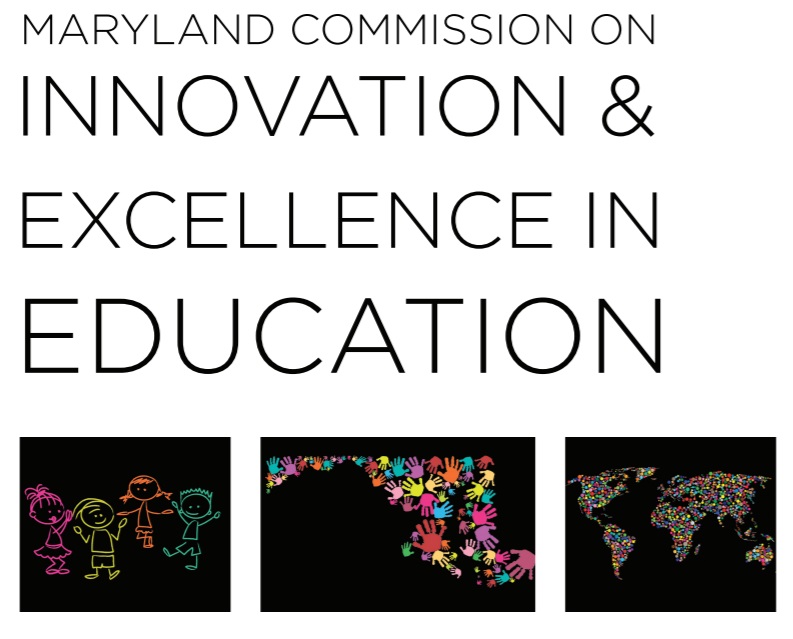Brit Kirwan, the former university chancellor who chaired the education reform commission that came to bear his name, repeatedly stressed that “Accountability must be a key element in increased money for schools.”
Accountability was certainly a feature of the massive 235-page bill, HB1300, that implements the 10-year, multi-billion-dollar plan for strengthening and rebuilding K-12 education in Maryland. Gov. Larry Hogan vetoed that bill not just because it would require higher taxes but also because he found it lacking in accountability.
Next week, the legislature will attempt to override Hogan’s veto. In this article, Maryland Reporter contributor Charlie Hayward, a life-long government auditor, takes a deep-dive into the accountability features in the legislation and finds numerous problems.
By Charlie Hayward
The reforms to implement recommendations of the Commission on Innovation and Excellence in Education are a comprehensive and thoughtful rebuilding of the state’s education policy and procedures. Oversight of Kirwan’s education reforms is expected to come from an Accountability and Implementation Board, whose responsibilities would include governance and accountability during the board’s limited 10-year life.
The board’s design casts significant doubt that $32 billion of additional education spending to implement Kirwan’s goals over the next 10 years will lead to durable and significant improvements to Maryland students’ “College and Career Readiness” by the end of high school. That is mainly due to the deficient answers to five key questions about the board.
- What’s the status of Kirwan’s Accountability Board?
- Does the board have enough resources to do its job?
- Can the board really be independent in view of its inherent competition with the state’s multiple policymaking and oversight bodies?
- Measuring the Blueprint’s implementation, is there enough integrity?
- Is there the risk that funding will be diverted to other school system needs?
This article will show that the new accountability board has neither the staff nor the money to succeed at its mandate. This board will have a hard time retaining the independent role envisioned by the commission. Measuring Kirwan’s implementation appears to lack the necessary connection between the aid and the outcomes that aid is supposed to produce. Funding diversions by local school boards will likely dilute Kirwan’s intent and create a piecemeal implementation.
Background—Thornton and Kirwan Commissions
The Kirwan Commission is the successor to the Thornton Commission. Both were charged with reforming the state’s K-12 education and matching policy with the appropriate funding levels. Thornton met for three years (1999-2002) and Kirwan met during 2016-2019 to study similar issues. Kirwan seems to have made major strides to refine and improve Thornton.
Thornton recommended a school-financing system structured around standards-based accountability and stipulated “Accountability Plans” for each of the state’s 24 school districts. Those plans were reviewed, approved and their implementation was monitored by the Maryland State Department of Education (MSDE).
Kirwan found that Thornton “…did not work as intended…” at least partly because accountability plans became compliance exercises, not drivers of the education reforms they described.
State legislators implemented Thornton via the “Bridge to Excellence Act” which ushered in state and local education funding increases totaling $3.6 billion over the fiscal years 2002 to 2008. After the Great Recession cut deep into state revenues, planned increases to Thornton aid were reduced. FY 2009 to 2016 per-pupil funding was virtually flat, increasing about 2% annually, a little more than the rate of inflation.
To address Thornton’s shortcomings, the legislature passed “The Blueprint for Maryland’s Future” in 2018, 2019 and 2020 to implement Kirwan. Gov. Hogan vetoed the Kirwan legislation passed during the 2020 session.
Skeptics say the “Blueprint for Maryland’s Future” won’t produce durable enhancements to education as passed and it will suffer a fate similar to Thornton.
Those critics might be right. There are five reasons.
What’s the status of Kirwan’s Accountability Board?
Blueprint legislation passed since 2018 has authorized spending more than $660 million for partially implementing Kirwan’s recommendations. Gov. Hogan’s FY 2022 budget proposes spending additional Kirwan funding of $752 million, bringing the total to $1.4 billion.
Meanwhile, the “Accountability and Implementation Board” — the legislature’s new name for the commission’s “Governance and Accountability Board” — doesn’t exist yet. The 2020 session’s enabling legislation to establish the board was vetoed. The governor’s just introduced FY 22 budget doesn’t mention the board or budget any resources to pay for operations.
Delays to create the board beyond 2020 will adversely affect Kirwan’s implementation, because the Kirwan report says its reform elements can’t be implemented piecemeal (page 30). And since the board will require significant lead time to recruit board members and staff, and to mobilize its workforce and design its workflows, funding delays will magnify the problem.
These delays could cripple the Blueprint’s governance and accountability provisions. The impasse over the board must be resolved as soon as possible if the Blueprint continues to be funded.
Does the board have enough resources to do its job?
HB 1300 would have provided an average of $1.8 million annually for the Board’s core duties, plus $3 million annually for each of the three years ending in FY 2024 for outreach and technical assistance to the state’s 24 school districts.
The board would consist of seven uncompensated members and 15 support staff. Assuming support staff includes administrative personnel, total net resources devoted to the board’s core work will be about 12 people—roughly six staff for the implementation mandate and six for accountability.
Nobody knows if this staffing level will match the board’s mandates, and Dr. Kirwan himself has said so (video at 1:27:00.) In fact, the commission established the board’s budget limits based on ad-hoc assessment rather than systematically analyzing the technical work required against a staffing mix to accomplish that work. The commissioners expressed a desire for a “small board.”
There is a strong possibility the board cannot function independently with the staffing levels recommended by the commission.
The evidence starts with the commission’s protracted time for finalizing its work. In early January this year, the commission released a “Final Report,” even though it hadn’t had any official meetings since November 2019. Earlier, by an Interim Report dated January 2019, the commission adopted what it characterized as its final policy and funding recommendations. Thus, the complexity of the reforms delayed the Commission’s work by more than three years after the legislature’s December 31, 2017 deadline.
The board inherits most of the complexity which delayed the commission’s work. Worse, the board will face significant institutional barriers the commission didn’t need to cope with. One commissioner candidly expressed his thoughts about these barriers (Kirwan Interim Report, page 152): “…every vested interest in the state will oppose changes of this magnitude, while clinging to the bits that advance their own interests.” The board will face these impediments throughout its 10-year life.
Strains on a small staff
A closer look at the board’s wide-rangind mandates also indicates the likelihood of significant strains on a small staff. Concerns include:
Developing a set of reliable outcome measures for each of the four policy areas, including cross-cutting measures of poverty, race and academic achievement, will be very challenging. These measures are intangible, long-term, and often not directly impacted by a single department’s or agency’s actions. It’s unlikely the board will have expertise in this area and will be forced to rely on MSDE expertise.
- Measures could be constrained at the outset by any limitations of data owned by the Longitudinal Data System Center and MSDE. These data were designed for measuring historical performance metrics, which may not align with measuring Kirwan. In fact, Kirwan’s benefits won’t all be measurable for many years. Although the commission recommended significant budget for upgrading data collection, the timing of those upgrades will interfere with the continuity of performance measures because more and better data are likely to change what’s being measured.
- The board must set criteria for the form and content of implementation plans of 24 school districts and several state government entities. This is a difficult task because there’s no “off-the-shelf” template due to the uniqueness of Kirwan’s policy proscriptions. (The board has $3 million annually for three years to finance technical assistance, not for developing the plans.)
- The board is supposed to be given money for independent evaluations of its work by outside, private experts after the 5th and 10th years of its term. These evaluations will produce recommendations that will require rewriting all implementation plans, and lead to the need for redesigning the related performance measures.
- The board will be responsible for overseeing phase in and phase out of multiple education programs and policies over the 10-year implementation period (Commission report, p. 11)
- Enabling legislation requires the board to adopt regulations broadly (HB 1300 p. 80) and the commission’s report specifies several cases specifically (Commission report, pp. 113, 148.) Presumably this would require the Board to promulgate, vet and maintain regulatory guidance pursuant to COMAR, and it likely will need to do so with jointly issued regulations co-written with MSDE and others. The state’s COMAR process is quite legalistic, requiring interim regulations, a comment period, final regulations, and annual updates in a continuing cycle.
- The board’s mandate requires it to manage the annual multi-part cycle of (1) revising its annual implementation plan templates for the 24 school districts and the various state and local entitles; (2) reviewing those plans; (3) deciding their sufficiency and whether to withhold funding; and (4) monitoring outcomes—all in consultation with four or five other state agencies.
- The Blueprint legislation establishes two types of expert review teams – one administered by MSDE and the other by a Career and Technical Education Committee. These teams will give feedback to the board. So the board will need significant time to rewrite its policy guidance for implementation plans to align with these teams’ recommendations, and revise the related performance measurements.
- The commission’s report itself isn’t written in a format to facilitate the board’s formative work because it doesn’t enumerate goals or objectives for the five policy areas. The report is written in narrative form such that its content can’t be plugged into an implementation matrix unless it is first translated into a discrete set of goals. The board will need time and substantial collaboration and consensus with MSDE and the vestiges of the commission at large, to translate the report into a form that can be applied to the board’s mandates.
- The state’s history of litigiousness over education funding and reform could delay or disrupt the board’s work.
- Sen. Paul Pinsky and other commission members voiced concerns that teacher unions are likely to push back on the board’s work, possibly asserting the need to reopen collective bargaining agreements due to changes in members’ benefits, hours, and terms and conditions of employment. Although the board has no role in negotiations, any significant union pushback could delay or disrupt the board’s implementation.
Inadequate staffing poses a substantial risk the board could lose or impair its independence. Impairments to independence might lead to less autonomy, subordination of judgment; mixed clarity of goals; unintentional favoritism of monitoring; or less ability to select undistorted performance metrics.
To address this problem, the board may need to appoint a staff ombudsman who reports to one of its seven-member board to monitor whether its workload is commensurate with its staffing so the governor and legislature can be informed promptly if or when the board’s staffing becomes insufficient.
Can the board really be independent in view of its inherent competition with multiple policymaking, accountability and oversight bodies?
At least five different state entities have longstanding administration and accountability responsibilities for education policy which the board is mandated to modify over its 10-year term. Those five will continue their traditional roles while the Blueprint is implemented, but the Blueprint legislation requires these entities to collaborate and cooperate with the board’s mandates, with board authority being nominally superior.
The largest of these five is MSDE, whose leader, the state superintendent of schools, is leaving her post later this year.
MSDE employs 1500 people with a proposed FY 2022 budget of $9 billion— $8.5 billion of that is the state funding of the 24 school districts. MSDE has significant legacy responsibilities for performance measurement, including a deputy superintendent – chief performance officer, and at least two divisions responsible for K-12 performance measurement and assessment:
The Division of Accountability and Assessment has 36 staff and a $54 million budget. The Division of Curriculum, Assessment and Accountability has a staff of 56 and a $9 million budget.
Blueprint legislation doesn’t modify the legislation enabling MSDE’s functions, and the commission apparently didn’t seek any study by the Department of Legislative Services about potential conflicts posed by the authorities granted temporarily to the board.
The commission’s language to address these overlapping authorities provides that the board:
“…is not intended to usurp the operational authority of the Maryland state Department of Education (MSDE); Governor’s Workforce Development Board (GWDB); Maryland Higher Education Commission (MHEC); Department of Commerce; Department of Labor, Licensing, and Regulation; higher education institutions; or any other state agency or entity that will be involved in implementing the legislation. Likewise, it is not intended to replace day-to-day decision making by local boards of education and superintendents”
It isn’t clear how major policy differences will be resolved between or among the multiple accountability and administrative bodies. Several commissioners mentioned concern there is no oversight of the board itself, in view of the fact there will be any number of issues not subject to bright line distinctions.
The commission addressed these concerns broadly by citing consultation, comity and coordination, but there isn’t any assurance a spirit of cooperation is enough to resolve complex policy issues inherent to multiple entities’ turf.
Measuring the Blueprint’s implementation—enough integrity?
The legislation vetoed last year by Hogan would have instituted the new board to measure implementation based on outcomes demonstrating the achievement of the Kirwan Commission’s twin goals of elevating overall student performance to an international standard and eliminating opportunity and achievement gaps.
Measuring outcomes by themselves, and not measuring cost inputs or outputs, is a limitation contrary with performance-measurement science.
That science is articulated in countless authorities including government accounting standards; by the U.S. Government Accountability Office; the state’s own Managing for Results legislation; and many academic studies applied to performance measurement in the real world of government programs.
For example, the Government Accounting Standards Board—GASB 5, Service Efforts and Accomplishments Reporting, specifies a comprehensive methodology using a three-part measurement structure—inputs, outputs and outcomes; where outcomes measure effectiveness of spending based on the underlying service efforts and service accomplishments.
By confining the board’s measurements to outputs, the linkage among budgets, spending, and implementation plans gets decoupled — causing a “measurement desert,” where essential measures of cost inputs and service outputs aren’t factored into the state’s assessments of the success of implementing the commission’s policy prescriptions. In other words, this “measurement desert” will break the link between cause and effect, such that the state may well find itself measuring outcomes that have no objective nexus with spending authorized in legislation and may in fact, not drive the outcomes being measured.
What about the risk of funding diversions?
The Maryland State Education Association estimates K– 12 education is underfunded by $2.9 billion per year. MSEA; the state’s principal expert consultant (Augenblick, Palaich, and Associates); and Dr. Alvin Thornton; are among the many voices with similar claims.
It appears this $2.9 billion shortfall excludes any funding to eliminate previous-years’ unfunded teacher pensions and post-retirement benefits. Accrued liabilities for those unfunded benefits are the primary reason audited financial statements for the six largest school districts show significant accumulated deficit spending, weak financial condition, and negative equity—some exceeding $1 billion of red ink per school district. These accumulations of unfunded liabilities will have to be offset in future by more revenue.
What happens to Blueprint money intended for Kirwan with respect to the elements of MSEA’s underfunding estimate that aren’t directly required by the Kirwan Commission; and the 24 school districts’ unfunded liabilities?
Both the commission and the legislature have sidestepped this question. The Commission’s three reports (2018 “Preliminary”, 2019 “Interim”, and 2020 “Final”) contain no specific recommendation to account for and spend Kirwan money directly for Kirwan objectives. In fact, the preliminary report says “…a meaningful portion of new funding must be subject to the approval of specific plans to implement the commission’s recommendations and must be subject to demonstrated progress towards greater student success…” Kirwan emphasized this sentence in his opening remarks to the commission on Oct. 31, 2018 meeting (see 0:58:00 of the video.)
The specter of withholding “not less than 25% of new funds….” within the board’s accountability scheme (specifically Element 5e’s two-tier provisions) appears to be the primary means of enforcing fidelity to Kirwan’s goals. To that extent, it is a significant design flaw in the accountability mandate, because there are no prohibitions against diverting Kirwan money to non-Kirwan uses.
Funding diversions aren’t just theoretical—they began in FY 2019 in the very first year’s appropriation of Kirwan’s “Aid to Education” money. In this video, counsel for Howard County’s Board of Education opines that, because Kirwan’s “Aid to Education” money isn’t earmarked (in the Blueprint’s legislation) for Kirwan’s goals, “all Kirwan money except teacher salary money… can be used to supplant local funding… and every in-house attorney he’s talked to (as well as Rachel Hise, a key DLS Policy Analyst to the Commission) shares that opinion.” Refer to 2:33:50 to 2:43:00 of the video.
The vast majority of Kirwan’s financing is included in a spending category called “Aid to Education;” or $714 of $752 million in the governor’s FY 22 budget. Spending legislated under “Aid to Education” law generally consists of grant funding not earmarked to specific uses (although spending is delineated within the Subtitle II’s categories). The Blueprint’s language conforms with this practice.
In other words, the common belief among many school districts appears to be that Kirwan’s “Aid to Education” funding can be made available to fund school districts’ local budget shortages to the extent those districts can justify a broadly indirect linkage between their spending and Kirwan’s goals.
This widespread belief that it’s OK to use Kirwan money to supplant local budget shortfalls does not appear to conform with the Kirwan Commission’s stipulation that its goals cannot be implemented in piecemeal fashion.
Conclusion
Dr. Kirwan, the Commissioners, and their consultants seem to have done a remarkable job of evaluating the issues.
However, the design for governance and accountability is unlikely to overcome Thornton’s shortcomings, because The Bridge to Excellence legislation (implementing Thornton) and The Blueprint for Maryland’s Future legislation (implementing Kirwan) continue to suffer from too many common weaknesses, including at least four major elements. Specifically:
- Kirwan’s accountability board resources appear to be insufficient to meet its mandate.
- The board is unlikely to retain its independent role envisioned by the Commission.
- Measuring Kirwan’s implementation appears to lack the requisite connection between financial inputs and expected outcomes.
- Funding diversions by local school boards will create a piecemeal implementation contrary to both the KIrwan Commission and the intent of its enabling legislation.







Recent Comments